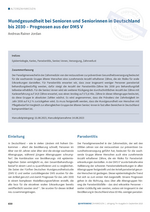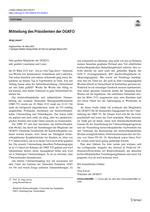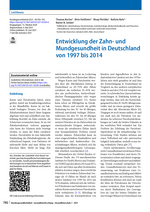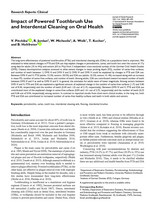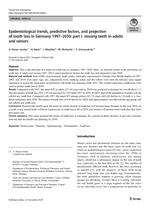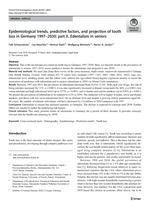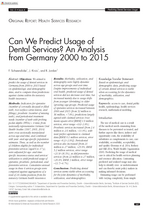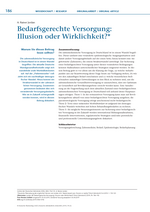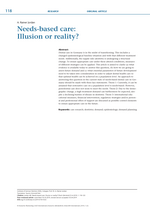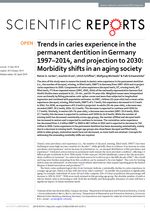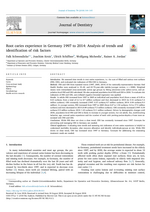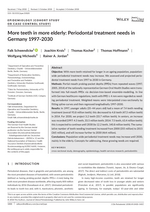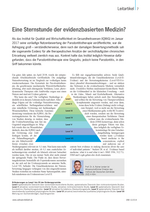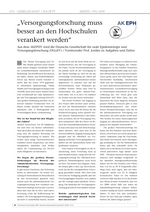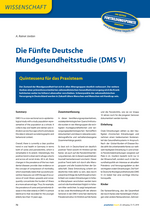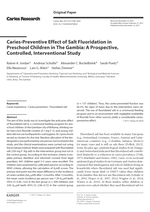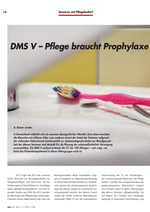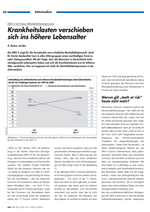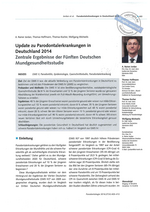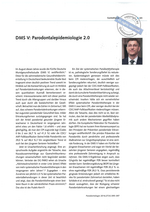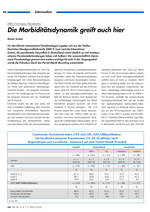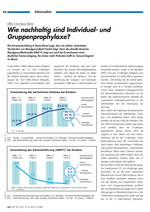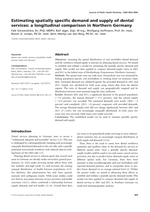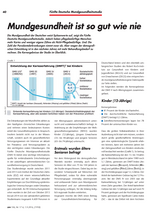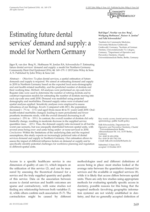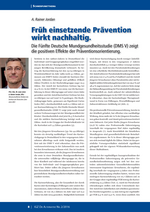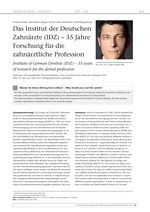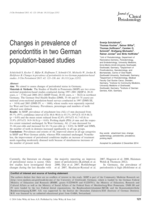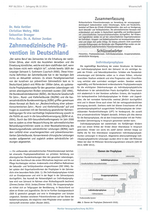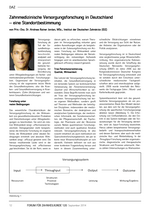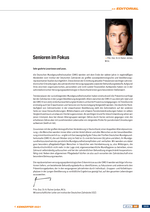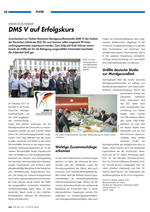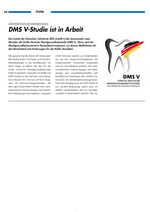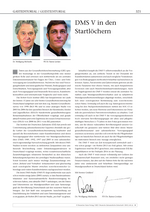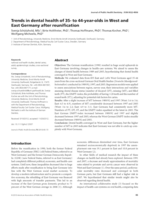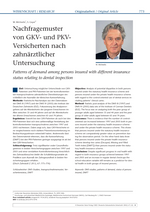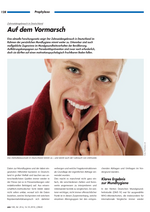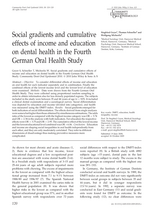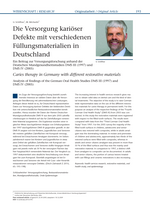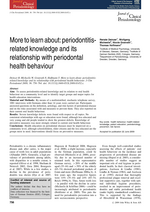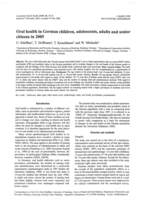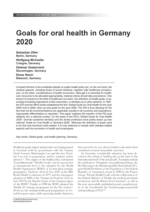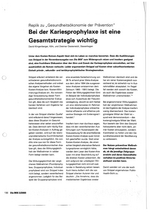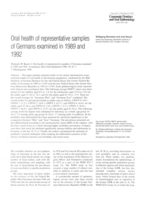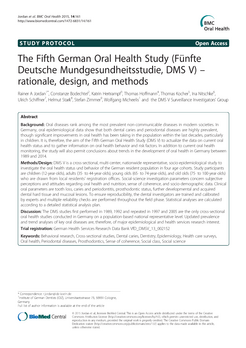
Gesundheitsversorgungsforschung und -epidemiologie
Autoren
Jordan, A. Rainer
Cholmakow-Bodechtel, Constanze
Hertrampf, Katrin
Hoffmann, Thomas
Kocher, Thomas
Nitschke, Ina
Schiffner, Ulrich
Stark, Helmut
Zimmer, Stefan
Micheelis, Wolfgang
DMS V Surveillance Investigators' Group
Schlagwörter
Behavioral research
Cross-sectional studies
Dental caries
Dentistry
Epidemiology
Health care surveys
Oral health
Periodontal diseases
Prosthodontics
Sense of coherence
Social class
Social science
Publikation — Zeitschriftenbeiträge
Titel
The Fifth German Oral Health Study (Fünfte Deutsche Mundgesundheitsstudie, DMS V)
Untertitel
rationale, design, and methods
Titel kurz
BMC Oral Health
Titel Ausgeschrieben
BMC Oral Health
ISSN
1472-6831 (Electronic);1472-6831 (Linking)
Jahr
2014
Ausgabe
14
Issue
1
Seitenzahl
161
Erscheinungsdatum
29.12.2014
The Fifth German Oral Health Study (Fünfte Deutsche Mundgesundheitsstudie, DMS V)
rationale, design, and methods
BACKGROUND: Oral diseases rank among the most prevalent non-communicable diseases in modern societies. In Germany, oral epidemiological data show that both dental caries and periodontal diseases are highly prevalent, though significant improvements in oral health has been taking in the population within the last decades, particularly in children. It is, therefore, the aim of the Fifth German Oral Health Study (DMS V) to actualize the data on current oral health status and to gather information on oral health behavior and risk factors. In addition to current oral health monitoring, the study will also permit conclusions about trends in the development of oral health in Germany between 1989 and 2014.
METHODS/DESIGN: DMS V is a cross-sectional, multi-center, nationwide representative, socio-epidemiological study to investigate the oral health status und behavior of the German resident population in four age cohorts. Study participants are children (12-year-olds), adults (35- to 44-year-olds), young olds (65- to 74-year-olds), and old olds (75- to 100-year-olds) who are drawn from local residents' registration offices. Social-science investigation parameters concern subjective perceptions and attitudes regarding oral health and nutrition, sense of coherence, and socio-demographic data. Clinical oral parameters are tooth loss, caries and periodontitis, prosthodontic status, further developmental and acquired dental hard tissue and mucosal lesions. To ensure reproducibility, the dental investigators are trained and calibrated by experts and multiple reliability checks are performed throughout the field phase. Statistical analyses are calculated according to a detailed statistical analysis plan.
DISCUSSION: The DMS studies first performed in 1989, 1992 and repeated in 1997 and 2005 are the only cross-sectional oral health studies conducted in Germany on a population-based national representative level. Updated prevalence and trend analyses of key oral diseases are, therefore, of major epidemiological and health services research interest.


